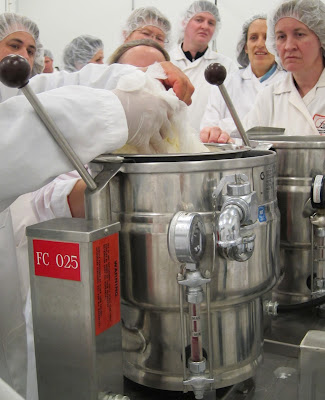You Can Do It!
 As the comments on yesterday’s post indicate, it is easy to feel discouraged about creating people-friendly cities. But Jan Gehl believes it is possible – by changing attitudes and by changing the design of your city. It doesn’t happen overnight, but he believes it can be done, and he gave his enthusiastic audience good ideas on how we can make it happen in Saskatoon.
As the comments on yesterday’s post indicate, it is easy to feel discouraged about creating people-friendly cities. But Jan Gehl believes it is possible – by changing attitudes and by changing the design of your city. It doesn’t happen overnight, but he believes it can be done, and he gave his enthusiastic audience good ideas on how we can make it happen in Saskatoon. Changing Attitudes
I took the bus to last night’s lecture, despite the fact that buses only run once an hour in the evening. The schedule doesn’t encourage people to take the bus, but there were only 3 people on my bus at 10:15 pm – the demand isn’t there to generate more frequent buses. It’s a vicious circle, and you can’t change that overnight.
Gehl says that part of the solution is to keep making it less convenient for people to drive a car – provide less roads and less parking – because the more roads you have, the more cars you will have.
Another part of the solution is to adopt a policy that says, “In this city, everything will be done to invite people to walk and bicycle as much as possible in the course of their daily doings.” That seems simplistic until you realize how blind we have become to the ways in which we let cars dominate. Gehl pointed out that we are obliged to “apply” to cross the street by pressing a button. Urban planners may believe that they are protecting pedestrians by installing walk lights, but in fact, they’re reinforcing the superiority of the car.
Melbourne, Australia
Gehl used his experience in Melbourne to show that North American-style cities based on a grid system can become more people friendly. You can close the main street to cars, install wider sidewalks with trees and attractive street furniture, and put cycle lanes between the sidewalk and the parked cars so that there is a protective buffer zone.
Roads encourage people to keep moving towards a destination whereas squares encourage people to stop and enjoy. People walk slower in squares. So Melbourne created squares and turned ugly alleyways into people places with sidewalk cafes and tiny stores.
You can provide tax and planning incentives for creating more residential housing in the downtown core. In 10 years, Melbourne went from 1,000 to 10,000 residents in the city centre, and 26 corner stores and supermarkets moved back into the area.
You can insist that new buildings must be interesting to look at from the sidewalk. Gehl contrasts 5-kilometre, pedestrian-paced architecture, which is small scale and rich in detail, with 60-kilometre, vehicle-paced architecture with big signs and wide streets.
Melbourne installed more street art and used lighting to floodlight fountains or buildings. They plant 500 new street trees every year.
Has it made a difference? Yes. There has been a 40% increase in pedestrian traffic in the daytime and a 100% increase in the evening. There has been a 200-300% increase in the number of people participating in stationary activities. And Melbourne has been declared the world’s most livable city three times.
Taking Responsibility
The question period at the end of the evening focused on what we can do to make Saskatoon a better place to live. It was very encouraging to see the Mayor on stage for the first presentation and to hear that one of the councillors had taken a cycle tour of the city with Jan Gehl. The City’s urban planners were out in force and had been prime instigators of the event.
But each of us need to play a part – by telling City Council what we want, by using the facilities that are available, by leaving our cars behind.
Business owners can do so much more to make the city an attractive place to live. Gehl described a group of investors in Norway who have decided to charge little or no rent on their ground floor units so that they can ensure that they are occupied by interesting businesses (ice cream stores, florists) that will attract shoppers.




Comments